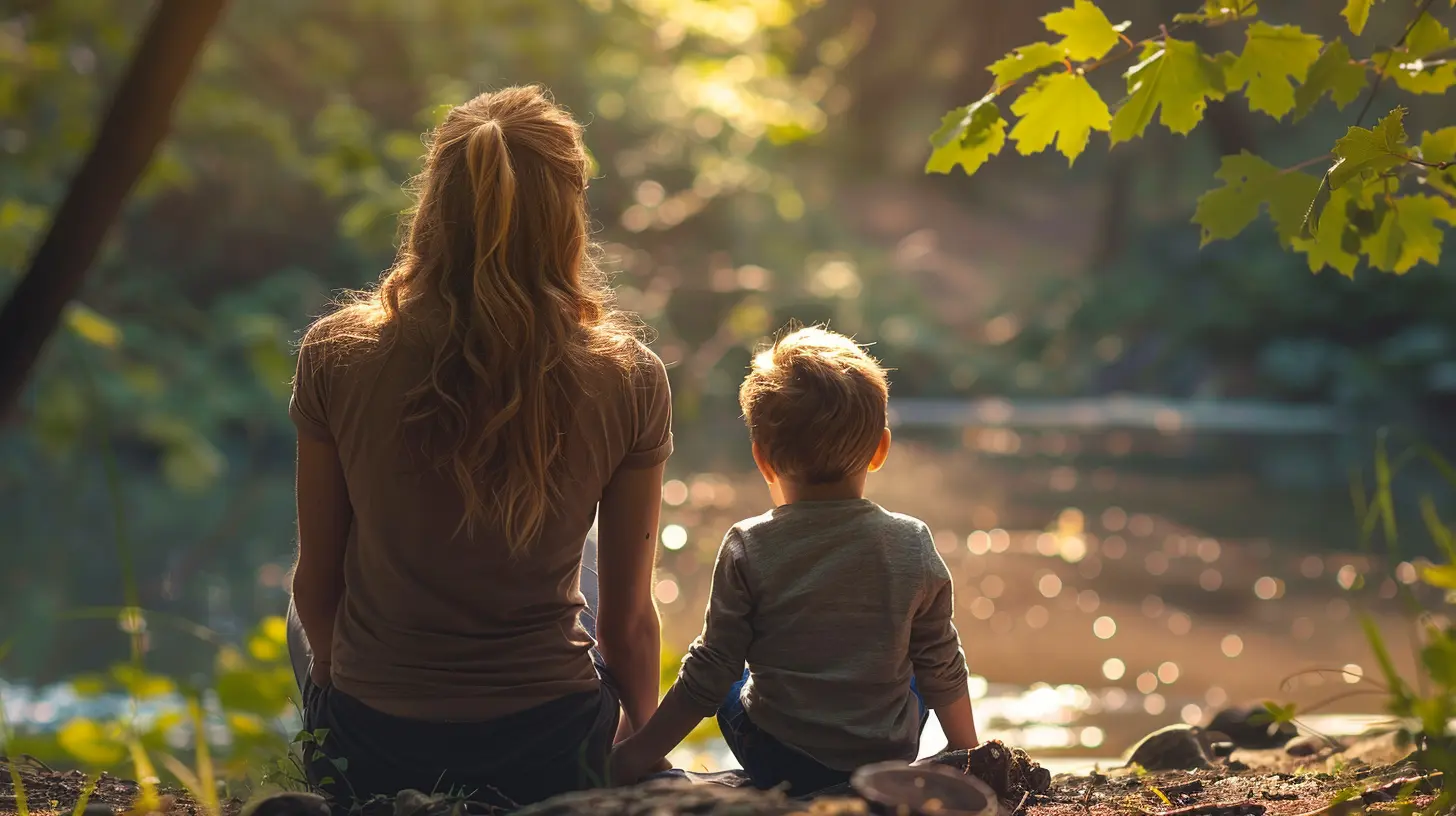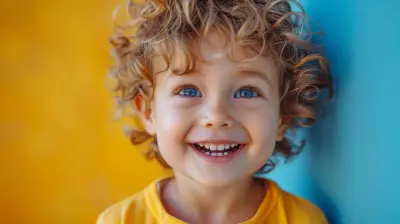Silence Speaks: The Power of Mindful Non-Verbal Communication in Parenting
18 September 2025
Let’s be honest—parenting is no walk in the park. It's messy, loud, beautiful, and overwhelming…sometimes all in the same hour. We read books, we scroll through parenting blogs (like this one), we take advice from friends, and yet, we forget something incredibly powerful that doesn't require any fancy techniques: our silence.
Wait. Silence?
Yep. You heard me right. Sometimes, the most impactful parenting tool isn't what we say—but what we don't. And it's not just about staying quiet—it's about being mindfully quiet. There's a world of wisdom in a hug, a glance, a soft smile, or even a deliberate pause.
Welcome to the often underrated but deeply transformative world of mindful non-verbal communication in parenting. Let’s unpack why silence sometimes speaks louder than words.
What is Mindful Non-Verbal Communication?
Before we dive deeper, let’s get on the same page.Non-verbal communication includes all the ways we communicate without speaking. Think body language, eye contact, facial expressions, touch, posture, even the energy we project. When you add "mindful" to it, you're intentionally tuning into these silent signals—both yours and your child’s.
It's about being present, aware, and conscious of your non-verbal cues. It’s parenting from your soul, not just your voice.
Honestly, it's one of the most heartfelt ways to connect with your child—especially when words just don’t cut it.
Why Silence Matters in Parenting
Let’s paint a picture.Your three-year-old is having a full-on meltdown in the cereal aisle (we’ve all been there). You feel the eyes of every stranger, your cheeks turn red, and your adult brain jumps into "damage control" mode.
But instead of snapping, what if you just got down to their level, made eye contact, and held space with gentle presence—no words, no shaming, no need to "fix" immediately?
That right there is powerful.
Here’s what silence can do:
- De-escalate heated moments: When everyone's emotions are sky-high, silence can be the calm in the storm.- Hold space: Sometimes kids need room to feel. Your quiet presence can say, "I'm here. You're safe."
- Build trust and security: When you listen with your eyes and respond with your energy, kids feel seen and accepted.
- Encourage independence: Giving a child space to process fosters emotional maturity.
Words are wonderful, but sometimes they get in the way. Silence, when used mindfully, can create deeper connection than any lecture or pep talk.
The Science Behind It
We’re wired for connection, not just conversation.According to child psychologists, up to 90% of communication is non-verbal. Kids, especially younger ones, are highly attuned to facial expressions, body language, and tone. Before they understand phrases, they understand vibes.
Ever noticed how your toddler knows when you're upset—even if you've said nothing? That’s not magic. That's their tiny emotional radar picking up on your non-verbal cues.
When you practice calm, grounded silence, it regulates your child’s nervous system. It teaches them emotional balance by example. Essentially, your calm becomes contagious.
Real-Life Moments Where Mindful Silence Shines
Let's get practical. Here are everyday parenting situations where saying less and tuning in more can make all the difference.1. Tantrum Time
As mentioned earlier, trying to reason during a tantrum is like pouring gasoline on a fire. Instead, try this:- Sit down next to them.
- Soften your gaze.
- Offer your lap or hand.
- Wait.
You don’t need to explain or lecture. Just be there, fully present. When they’re ready, they’ll come to you.
2. Bedtime Snuggles
Bedtime is sacred. Instead of filling the space with stories or songs (though those are lovely), try just lying together in silence. Match their breathing. Stroke their hair. Let your quiet presence lull them into peace.It’s in those silent moments that kids sometimes whisper their deepest thoughts.
3. When They’re Processing Big Emotions
After a disagreement or a tough day at school, children often go quiet. Respect their silence. Sit nearby. Offer open body language. Maybe just hand them their favorite snack or a warm drink.Words can come later. For now, your silent support is enough.
4. In Public Places
When your kiddo misbehaves in public, it’s tempting to discipline loudly (hello, embarrassment). But a gentle touch on the shoulder and a meaningful look can convey more than a thousand words—and with a lot more grace.How to Practice Mindful Non-Verbal Communication
This isn’t about being silent all the time. It's about intentional silence, combined with other non-verbal cues rooted in love and awareness.1. Start with Self-Awareness
Your kids pick up on your internal vibe. If you’re frazzled, anxious, or distracted, they’ll feel it.Before reacting, take a breath. Ground yourself. Ask:
> What message is my body sending right now?
2. Use Eye Contact
Intentional eye contact says, “I see you. I hear you. I value you.”But use it gently—don’t make it a stare-down.
3. Offer Touch Thoughtfully
Hugs, a pat on the back, holding hands—all are powerful ways to reassure your child.Physical presence often speaks volumes without uttering a single syllable.
4. Mirror Their Emotions Without Reacting
If your child is sad, let your face and body language reflect empathy—not panic or discomfort. This builds emotional intelligence.5. Embrace the Pause
Before jumping in with advice or direction, pause. This gives your child room to think, respond, or even problem-solve.Sometimes silence is the greatest vote of confidence.
The Benefits of Mindful Silence
You're probably wondering—does this really work? It does, and here's how:🧠 Emotional Regulation
By staying calm and present, you help your child develop tools for managing their own emotions. You're the role model.🤝 Strengthened Connection
When children feel seen and understood without being bombarded with words, trust deepens. It becomes a bond built on presence—not performance.💬 Better Listening Skills
Mindful silence creates space. And in that space, kids learn the art of truly listening and being listened to.❤️ Emotional Safety
Sometimes, it's not advice kids want. It's to feel emotionally safe. Mindful silence holds that space beautifully.When Silence Might Not Be Helpful
Okay, real talk—silence isn’t always the answer. There are moments when it can feel dismissive or neglectful if misused.Here’s when not to rely on silence:
- When your child is asking for emotional connection or clarity.
- During situations that require clear boundaries or safety instructions.
- If silence is used as the "cold shoulder" or a punishment.
The goal is mindful communication—not emotional withdrawal.
My Own Journey with Silent Parenting
Let me share a personal story.My daughter gets overwhelmed easily. When she was younger, I would try to “talk her down” every time she got upset. My intentions were pure, but I later realized I was overwhelming her even more.
One evening, during another meltdown, I sat beside her and said nothing.
I just held her hand.
At first, she resisted. But after a few minutes, she crawled into my lap and cried. Later, she whispered, “Thanks for not talking. I just needed you here.”
That moment changed everything for me.
Wrapping It Up: The Quiet Power You Already Have
So many parenting struggles come from the pressure to say the right thing, give the perfect advice, solve every problem. But parenting is more about connection than perfection.And sometimes, the most powerful way to connect with your child is through a wink, a squeeze, or just sitting silently beside them as they feel.
Silence, used mindfully, isn't empty—it's full of love, intention, and presence.
So, next time you’re unsure what to say… maybe don’t.
Just be.
Because sometimes the loudest love is the one that doesn’t make a sound.
all images in this post were generated using AI tools
Category:
Mindful ParentingAuthor:

Max Shaffer
Discussion
rate this article
1 comments
Jonah Howard
This article beautifully highlights the importance of non-verbal communication in parenting. Embracing silence and mindful gestures can strengthen our connections with children, fostering emotional understanding and support. It's a reminder that sometimes, what we don't say speaks the loudest.
September 20, 2025 at 3:17 AM

Max Shaffer
Thank you for your thoughtful comment! I'm glad you found the article impactful. Non-verbal communication truly is a powerful tool in nurturing our relationships with children.


